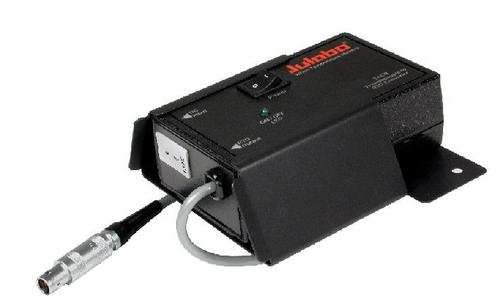 1. Military application information technology is driving a new military revolution. Information-based warfare requires the combat system to be "obvious, responsive, and accurate." Whoever takes advantage of information acquisition, transmission, and processing (acquisition of information rights) will be able to grasp the initiative of the war. With its unique advantages, sensor networks can meet the needs of real-time, accuracy, and comprehensiveness of military information acquisition on various occasions.
1. Military application information technology is driving a new military revolution. Information-based warfare requires the combat system to be "obvious, responsive, and accurate." Whoever takes advantage of information acquisition, transmission, and processing (acquisition of information rights) will be able to grasp the initiative of the war. With its unique advantages, sensor networks can meet the needs of real-time, accuracy, and comprehensiveness of military information acquisition on various occasions. Wireless sensor networks can help to achieve effective battlefield situational awareness and meet the requirements of the combat forces to "know oneself and know each other." The typical idea is to use an aircraft to disperse a large number of micro sensor nodes in a broad area of ​​the battlefield. These nodes self-organize the network, collect, transmit, and merge the battlefield information, providing information for each participating unit to “get what you needâ€. service.
Wireless sensor networks can also provide accurate target location information for fire control and guidance systems. The NEST battlefield application experiment is a project led by the US Defense Advanced Research Projects Agency (DARPA). It uses a large number of microsensors, advanced sensor fusion algorithms, and self-localization technologies. In 2003, the project successfully verified the sensor network technology that can accurately locate enemy snipers. It uses multiple inexpensive audio sensors to co-locate enemy shooters and identifies the positioning accuracy of three-dimensional space in the personal computers of all participating personnel. It can reach 1.5 meters with a positioning delay of up to 2 seconds. It can even show the difference between an enemy shooter's kneeling and standing shot, as shown in the figure.
Wireless sensor networks can also play an important role in dealing with chemical weapons. Cyrano Sciences of the United States has combined chemical detection and data interpretation into a proprietary chip technology called Cyrano NoseChip. Based on this technology, a low-cost chemical sensor system can be created that captures and interprets data and provides real-time alerts to cope with attacks by terrorists using chemical weapons. The system uses a C320 handheld sensor at the front end (as shown in Figure 5) to collect data on chemical agents. The sensor has a wireless connection to a back-end laptop that runs remote monitoring and server processes. The system uses IBM's wireless communications device, WebSphere MQ Everyplace, to transfer data. This handheld device can also be miniaturized into tiny nodes and deployed in the monitoring environment to form a wireless sensor network that operates autonomously.
2. In addition to civilian applications, the sensor network also has a broad prospect in the civilian field. For example, in environmental monitoring, changes in atmospheric composition can be monitored to monitor urban air pollution; changes in soil composition can be monitored to provide a basis for the cultivation of crops; rainfall and river water level changes can be monitored to achieve flood forecasting; Monitor the changes in air temperature and humidity to achieve early warning of forest fires. In biological research, the migration of migratory birds can be tracked, and animal habitats can be monitored. In space exploration, sensor nodes can be distributed on the surface of the planet to achieve long-term monitoring of the surface of the planet. In the medical area, sensors can be placed on patients so that doctors can remotely understand the condition at any time. In terms of traffic management, it is possible to monitor road congestion and achieve efficient road traffic management. In addition, wireless sensor networks can also be used in smart homes and smart office environments.
Animal habitat monitoring is an important application for traction of current sensor networks. The most famous is a sensor network deployed by researchers at the University of California in the United States on Great Duck Island off the coast of Maine (shown in Figure 6) to monitor the behavior of Storm Petrel. This kind of swiftlet habit is very special. It only inhabits this small island. It is very difficult to observe and study this animal by ordinary means. Therefore, the ornithologist and Berkeley scholars and Intel Corporation jointly developed this sensor network. Its sensor node is called the Mica mote, using a 4MHz Atmel Atmega 103 microcontroller, and the wireless communication rate is 40kbps. These sensor nodes pass the acquired data to a base station that is responsible for summarizing and sending a batch of data to the Berkeley database every 15 minutes via satellite. Users can access Berkeley's database, while on Daban Island, a PDA-like device can be used to directly interact with the network, adjust the sampling frequency or configure energy management parameters.
ALLIN , https://www.nbdisplayapio.com
